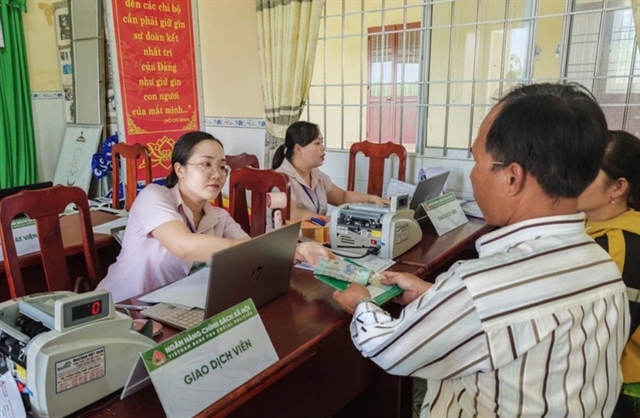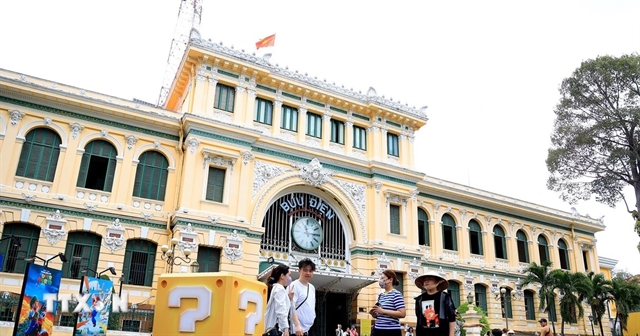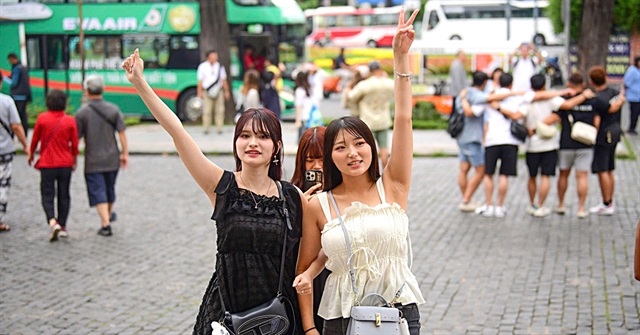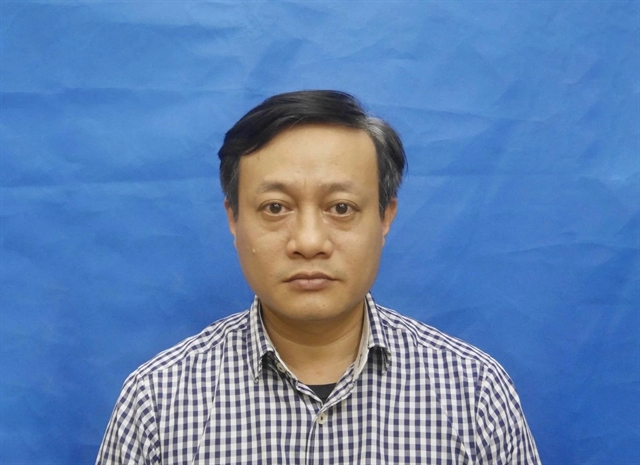 Life & Style
Life & Style

 |
| If Việt Nam has appropriate products, Japanese tourists would return to the country, experts said. — VNA/VNS Photo |
HCM CITY — Việt Nam is attracting increasingly younger tourists from Japan, prompting Vietnamese tourism companies to innovate their products and promotional activities to cater to this customer base.
Việt Nam used to be a favourite destination for Japanese tourists, with nearly one million visitors in 2019.
However, since the pandemic, Japan's slow recovery in outbound tourism has affected the number of Japanese tourists coming to Việt Nam.
Businesses believe that if Việt Nam offers good products and refreshes its promotional efforts, the country still has an advantage in welcoming Japanese tourists back.
For many years, Majestic Saigon, a nearly 100-year-old historical landmark with a view of the bustling Sài Gòn River, has been a popular destination for Japanese tourists.
The hotel has even dedicated a room to displaying memorabilia of a Japanese writer who once stayed there as a special tribute to visitors from Japan.
Võ Văn Nhanh, director of the Majestic Saigon, said that Japanese tourists are a vital part of the hotel's business, accounting for nearly 40 per cent of its annual guests.
"Japanese tourists appreciate the hotel's grandeur and long-standing architecture. The riverside location is also a significant draw," he said.
While solo travel used to be more common, there is now an increasing trend of Japanese tourists traveling with family members or in groups, especially over the past year.
Speaking with Tuổi Trẻ (Youth) newspaper, Hoàng Mạnh Đăng, general director of Apex Việt Nam, noted that while the number of Japanese visitors has not yet met expectations, the numbers are likely to increase in the coming months as Japan’s peak travel season lasts from October through March.
This positive trend provides a basis for Việt Nam to target higher visitor numbers from the Japanese market.
The key challenge will be creating products that not only lengthen tourists’ stay but also increase their spending.
Phạm Huy Bình, chairman of the Board of Saigontourist, said that self-guided travel trends can create significant challenges in competing for international tourists, particularly Japanese visitors.
"Japanese tourists are a large market with high expectations for service quality and culturally appropriate products," he added.
Changing portrait of Japanese tourists
 |
| Japanese tourists in HCM City. — Photo tuoitre.vn |
Võ Việt Hòa, director of International Tourism at Saigontourist, said that their statistics show an increasing trend of Japanese tourists opting for self-guided travel.
It is estimated that online individual bookings account for 50 per cent, which the other half booking through travel companies.
In addition to individual travelers coming for business or conferences, there has been a noticeable increase in Japanese tourists traveling with family or friends.
The sight of young Japanese tourists is now common on "Japanese streets" in HCM City, reflecting a shift in global travel trends.
These younger Japanese travelers book services from Japan, plan their trips independently, and prefer exploring on their own.
Though new tourism offerings in HCM City might not be entirely novel, the individual travel segment in Japan has been familiar for a while, and now dedicated zones catering specifically to Japanese tourists are being developed.
"We have a lot of experience serving Japanese tourists and are making adjustments to adapt to new tourism trends, such as building multi-language websites and developing social media channels," said Hòa.
Experts said that the tourism market is competitive not only within Việt Nam but also with neighbouring countries like Thailand and Singapore. Service providers are encouraged to reduce costs and prices to meet Japanese demands while fostering mutual growth.
New products
Đăng from Apex Việt Nam suggested that identifying new tourist segments requires new products to effectively tap into the market.
One potential investment is in educational tourism.
For example, school tours from southwestern Japan, which bring 3,000-4,000 students to Việt Nam each year, have been suspended due to various reasons, such as reliance on air routes. He suggested that adding more direct flights could open up more opportunities for such products.
Yoko Sakoda, a freelance Japanese journalist, confirmed Japanese tourists still lack information about Việt Nam’s tourism and new products.
“Promotional materials in Japanese are crucial as they help Japanese travelers feel more secure and make travel decisions more easier. The younger generation’s increasing English proficiency also means social media marketing should be considered," Sakoda said.
Đăng further suggested that Vietnamese tourism promotion should not focus solely on major cities in Japan where Việt Nam is already well-known.
"We should develop more Japanese-language content to reach Japanese in smaller cities and use more internet strategies, including inviting Japanese influencers to Việt Nam to survey tours," Đăng added.
Furudate Seiki, Japan's Deputy Consul General in HCM City, agreed that if Việt Nam has appropriate products, Japanese tourists would return to the country. — VNS



